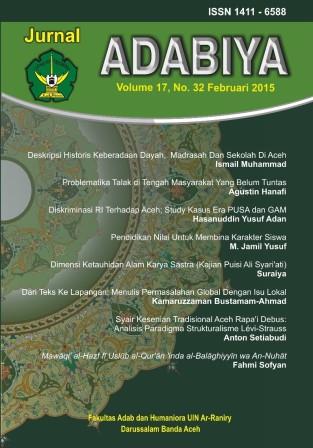References
Abdurrahman Mas’ud. 2009. Sejarah Peradaban Islam. Jakarta: AMZAH.
Ajat Sudrajat & Miftahuddin. 2008. Pengantar Sejarah Asia Barat. Yogyakarta: Fakultas Ilmu Sosial Dan Ekonomi, Universitas Negeri Yogyakarta.
Badri Yatim. 2017. Sejarah Peradaban Islam (Dirasah Islamiyah II). Depok: Rajawali Pers.
Din Muhammad, Zakariya. 2018. Sejarah Peradaban Islam. Malang: Cv. Intrans Publishing
Philip K. Hitti. 2006. History of the Arabs,Terj. R. Cecep Lukman Yasin & Dedi Slamed Riyadi. Jakarta: Serambi Ilmu Semesta.
Ramayulis. 2011. Sejarah Pendidikan Islam Napaktilas Perubahan Konsep, Filsafat- Dan Metodologi Pendidikan Islam Dari Era Nabi Saw Sampai Ulama Nusantara. Jakarta: Kalam Mulia.
Syahruddin El-Fikri, dkk. 2011. Menyusuri Kota Jejak Kejayaan Islam. Jakarta: Republika.
Susmihara. 2017. Sejarah Peradaban Dunia I. Makassar: Alauddin University Press.
Suryaman, M., & Kurniasari, A. F. 2017. Perencanaan Pendidikan Dalam Lintasan Sejarah Zaman Primitif Hingga Era Bizantium. Dalam Jurnal Judika (jurnal pendidikan unsika), diakses pada 18 November 2021, https://journal.unsika.ac.id/index.php/judika/article/view/684
Wallbank, T. Walter, Tylor Alastair. 1949. Civilzation Past and Present. New York: Scolt, Foresman and Company.



